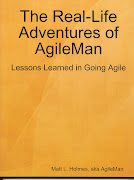When I went to do my Math tutoring tonight, it was the 2nd night of doing "Equations" (which is how Grade 7 Math refers to Algebra, apparently). An example of the sort of question that a Grade 7 student is expected to be able to solve would be:
2x + 3 = 9
Now, as far as I can tell (since the material hasn't actually been taught yet, as we're working a bit ahead), the approach to solving these questions seems to start with "by inspection" and then potentially move on to the more rigourous (and reliable) "get the variables on one side of the equals sign and your numbers on the other" method that we all know and love. I believe that's where it's going, because there are questions like:
5y + 1.1 = 6.6
where I don't think the average Grade 7 could arrive at the solution just by looking at it and trying possible answers in their head. Therefore, I've preferred that the student use that second approach (of grouping variables and numbers) in all cases where he can't immediately get the answer (rather than, say, sitting there for several minutes trying various #s to see if any will work). Last session, I showed him how to isolate the variable from the number, but I could tell tonight that it hadn't really sunk in.
So tonight, after a bit of recapping what we'd done last time, I told him that I was going to teach him how to solve harder problems, so that the sort of question that he's likely to see this year would seem trivially easy by comparison. He was skeptical, and perhaps even a bit peeved that I was making him learn something that's more of a Grade 8 or 9 skill, but he went along with it.
To accomplish this, I showed him a slightly more difficult type of equation:
2x + 7 = 3x - 3
He fairly readily admitted that he couldn't solve that in his head. Then we proceeded to work through it together, with me repeatedly saying, "Let's get the x's together on one side, and the numbers together on the other, and make sure that whatever we do to one side of the equation gets done to the other side at the same time." I tried to drill home that latter point by explaining that it's like you have two kids who have to be treated equally... so if you give one chocolate ice cream, you have to give the other one chocolate ice cream. And if you take the ice cream away from one, you're forced to take it away from the other. You don't have any choice; it's the only way to maintain equality! He liked that analogy and kept joking about it, like saying, "If I give one broccoli...?" and I'd say, "Then you have to give the other one broccoli, the poor devil!"
Anyway, it took him a couple of tries but pretty soon he was adding or subtracting x's or y's or a's or b's from both sides, and adding or subtracting 2s or 5s or 9s from both sides, and quickly getting to his answer. After awhile, I asked him to make up an equation for me to solve, and showed him how you do it. He then proceeded to quiz me a few times, before we went back to having him complete them. (I like to challenge him to make up questions sometimes because I think it really requires him to understand the material that way.) In each case, the answer was always plugged back into the original equation to make sure that the left side indeed matched the right, and he seemed to really like that he could check his answer that way. (And that's why Algebra Rules!!!!)
So the experiment was this: teach the student something just a little more advanced than what he needed to know, and see if that helped him understand the simpler case. It seemed to work tonight, but I guess I won't know for sure until we see how he does on his Equations Test that's probably still weeks away. In the meantime we'll do lots of examples before moving on to whatever's next (Geometry, I think).
Subscribe to:
Post Comments (Atom)















1 comment:
Can you get the student to do some set theory? That's the good stuff. :)
Post a Comment